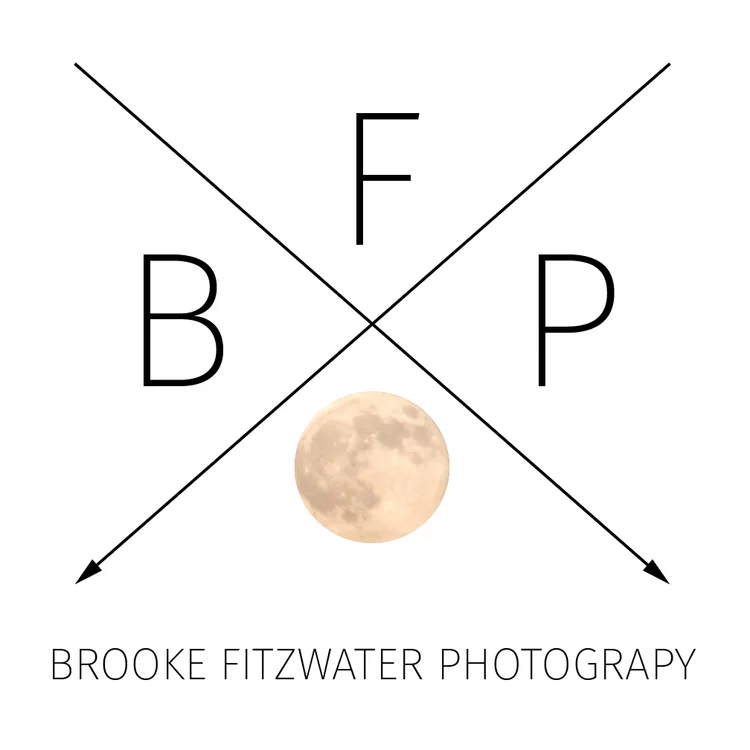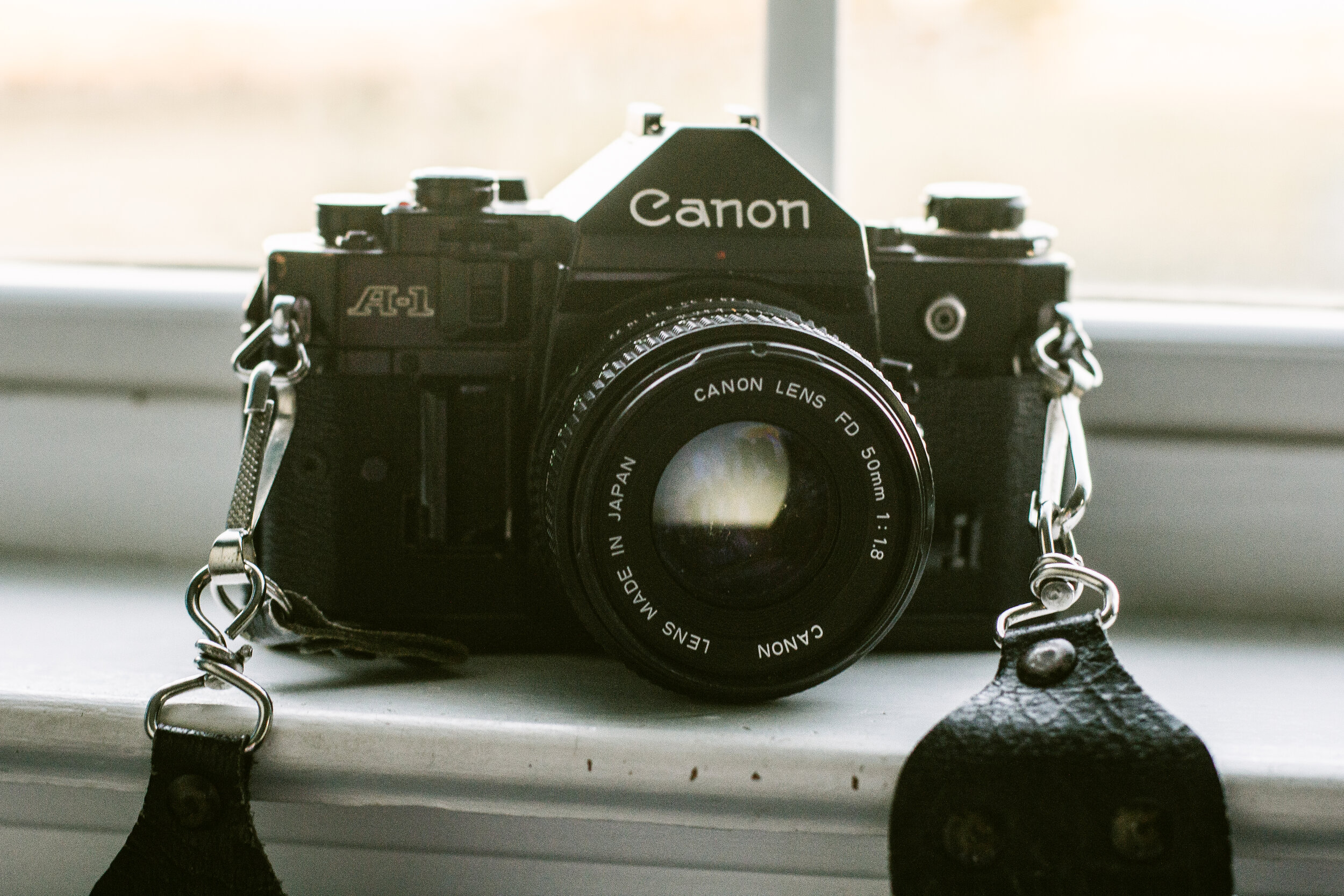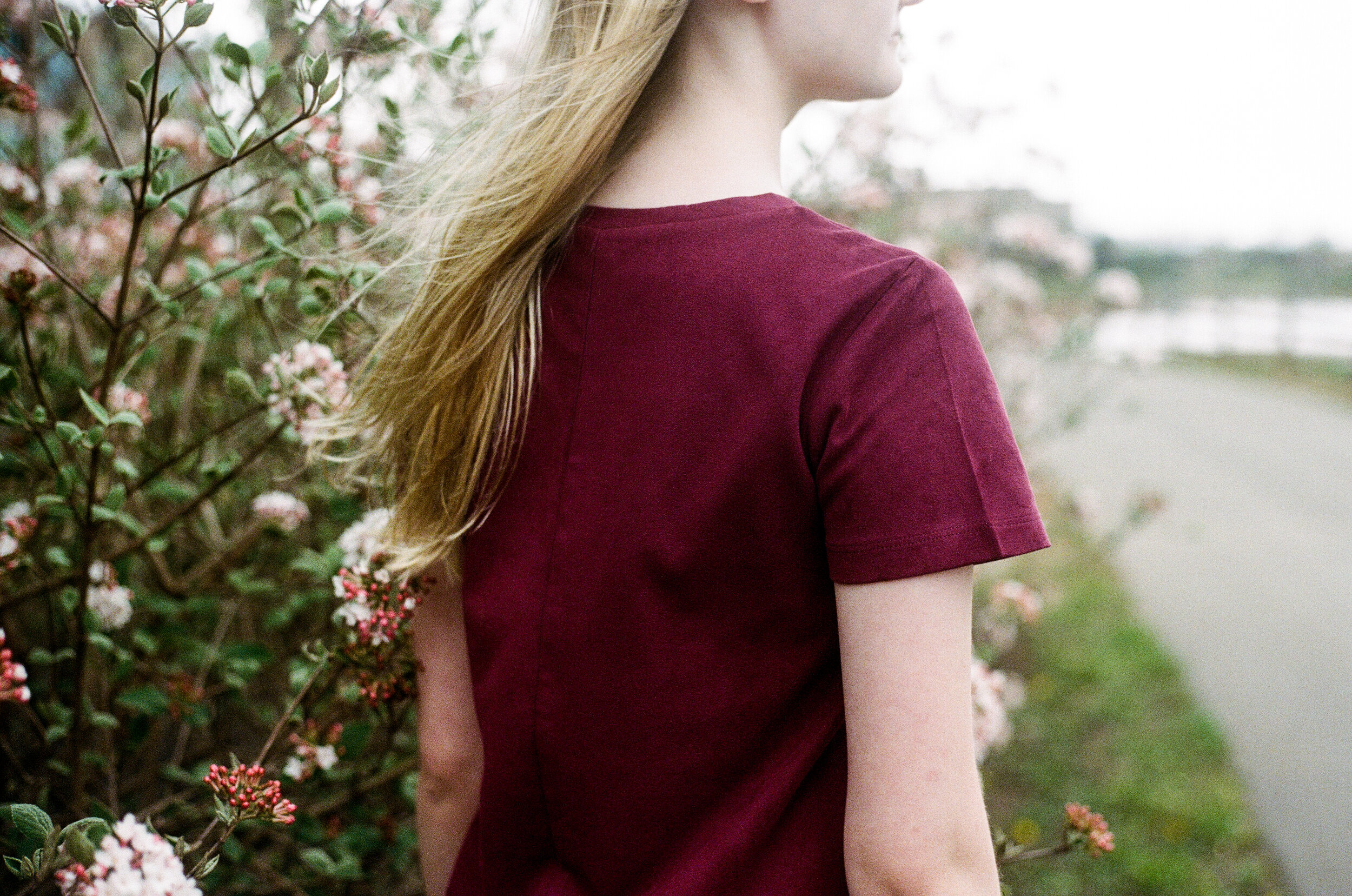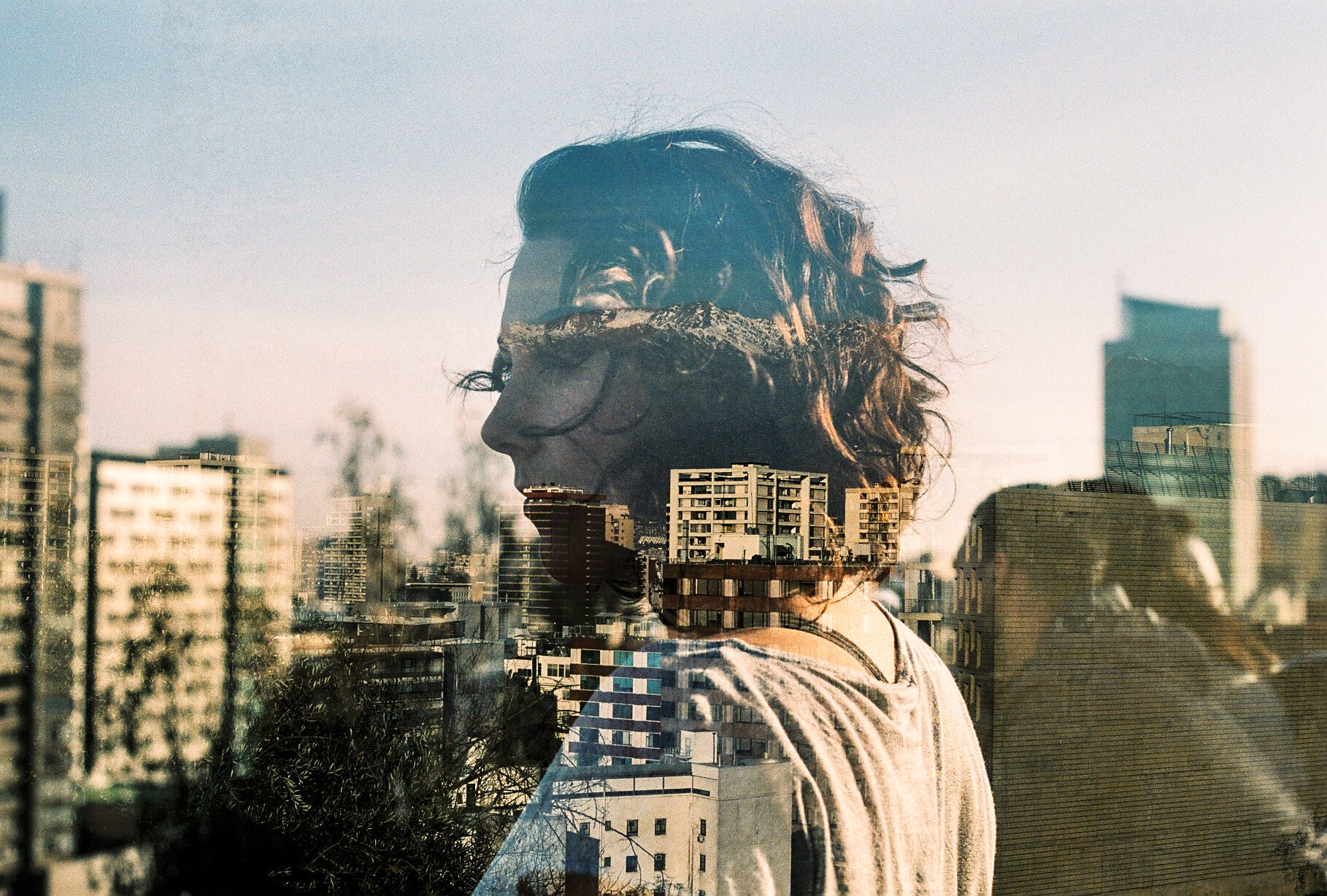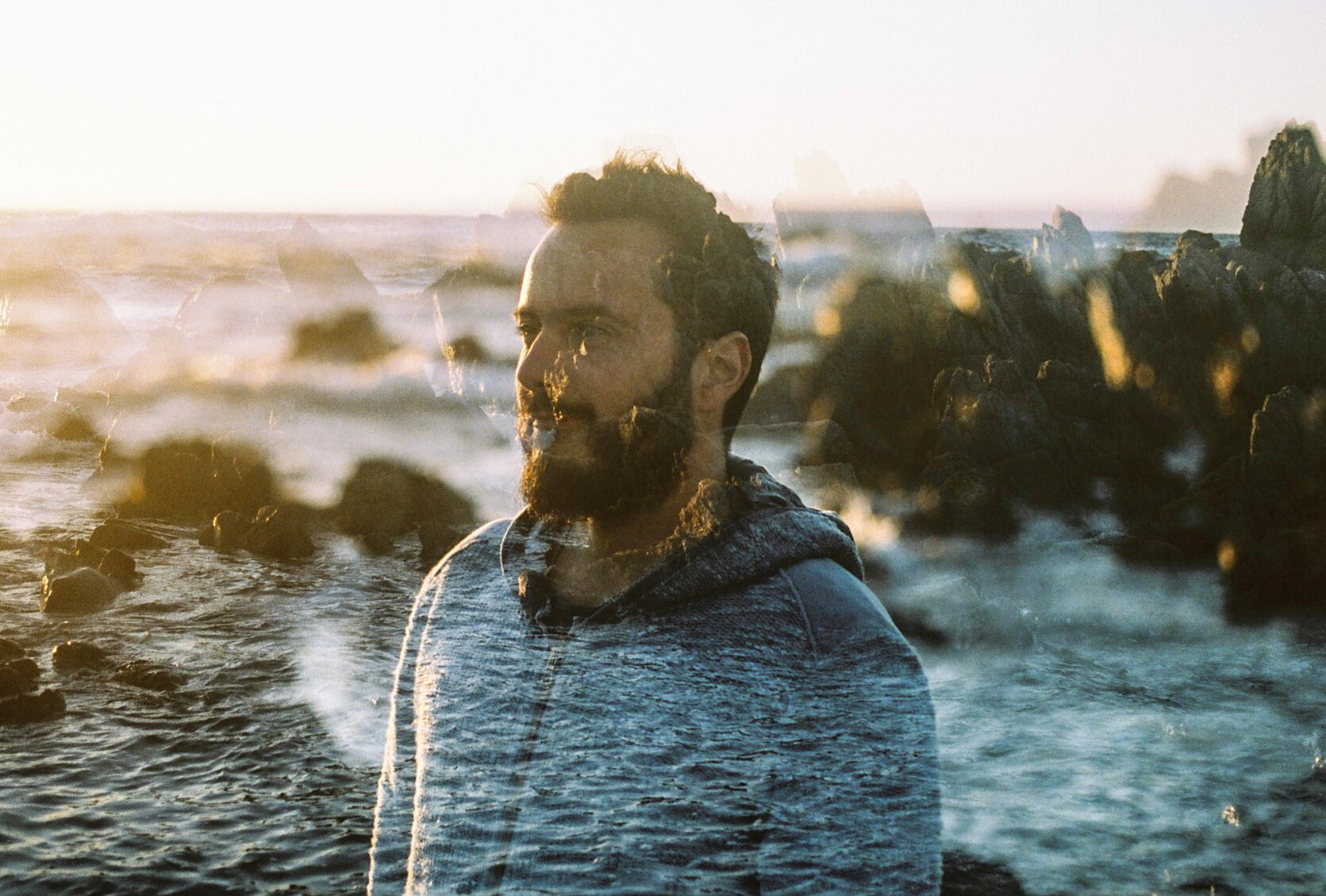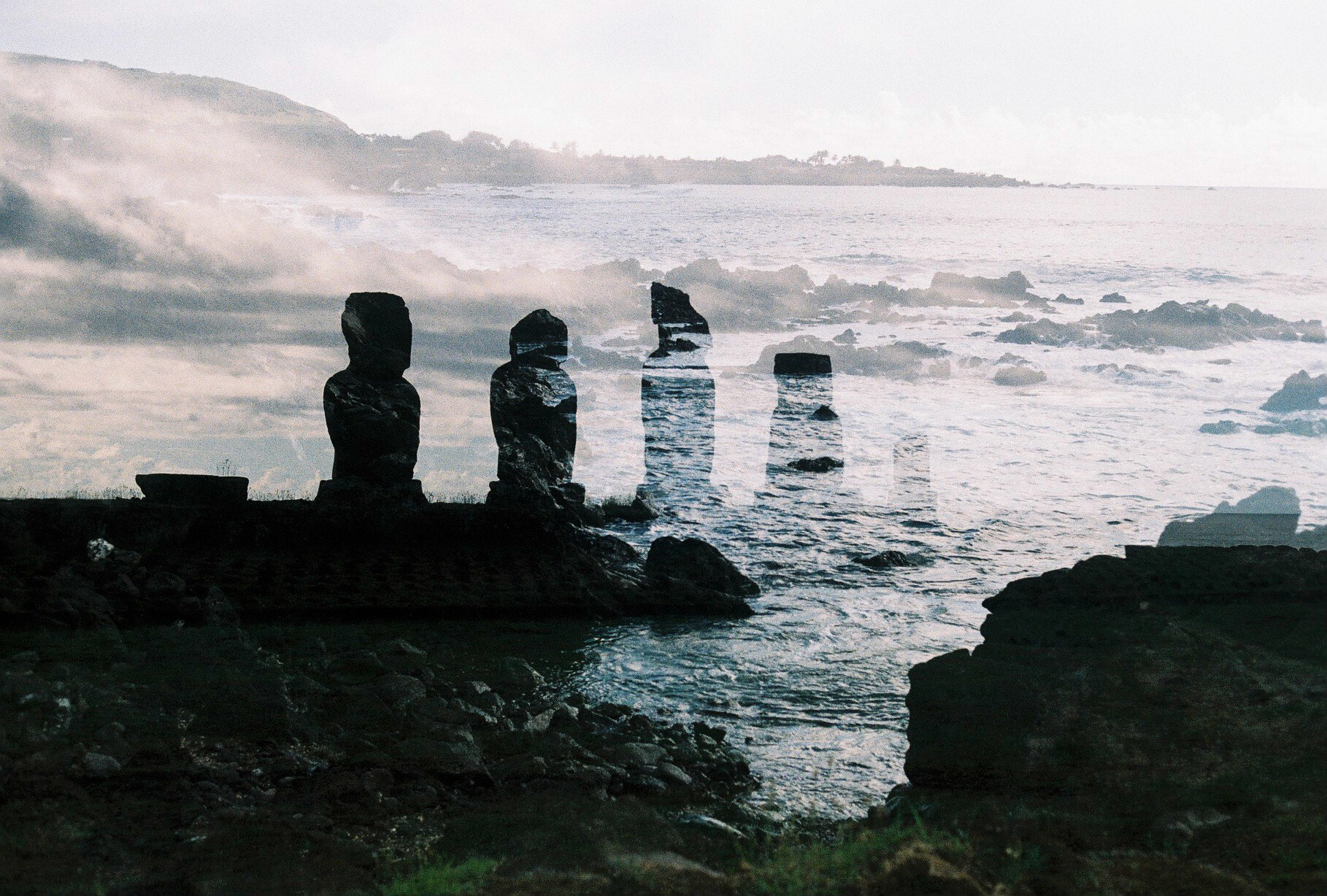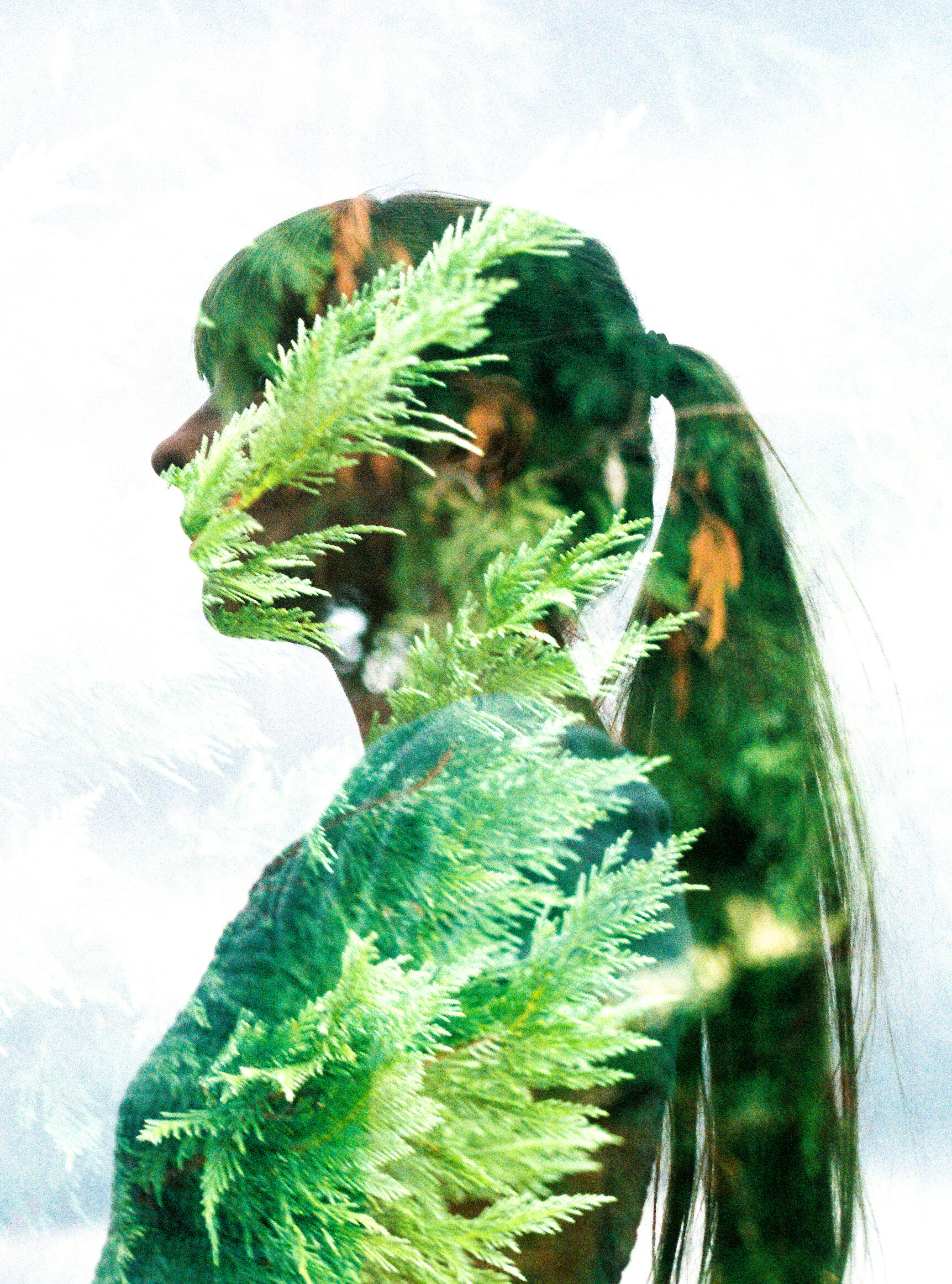While not as well-known as the Canon AE-1, the Canon A-1 is a force to be reckoned with. It takes high-quality 35mm photos and is also a very affordable (you can often find them for $100 or less!).
Functionality
The Canon A-1 has a fully automatic mode which can be very helpful to newbie photographers. As someone who already shot fully manual, I started shooting manually and continue to only shoot manually. The camera has a built-in LED light meter (this tells you what the recommended settings are for the photo based on the current lighting) on the inside of the viewfinder. You can view it by half-pressing the shutter button (I recommend doing this when you have not advanced the film so that you don’t take the shot by accident while trying to determine your exposure). The light meter is very accurate. When I first started shooting this camera, I determined the settings on my digital camera and then set those same settings for my film one. Eventually, I started using only the built-in light meter and all of my images have come out properly exposed.
The camera itself can be a bit confusing at first but once you get the hang of it, it becomes second nature. Don’t forget, you have to actually advance the film before you take a shot! You pull the lever to the right until you hear the film advance. I recommend choosing all of your settings BEFORE advancing the lever so that you don’t prematurely take the shot.
Compared to my current DSLR (Canon 60D), this camera is a bit heavy. It’s also built like a metal tank and you could easily knock someone out with it. However, it is not overly heavy and I usually feel very comfortable with it around my neck. It feels very ergonomic in your hands and is easy to carry around for traveling. I’ve carried this camera with me on many trips and have never had an issue.
You will need a battery to shoot with this camera. However, if you get a good battery (I had a Duracell), it will last a long time. Mine lasted two years, several trips, and many rolls of film before it died. You might want to have a spare handy when you travel, however, because the battery is a specialty one that may be difficult to find in a pinch.
Quality of the photos
I am often shocked by the quality of this camera. Sometimes you cannot even tell it’s a film camera, with some photos looking like I took them on my digital camera. The photos below were shot with Kodak Portra 400.
When combined with the proper film stock and settings, you can get some truly high quality shots. There have been very few instances where I wasn’t thrilled with the quality of the shot and this was usually due to something on my end (underexposed, did not focus properly, etc.). Even when using lower-end film stocks, the shots still come out looking great. The colors are beautiful and I’ve not had issues where colors get muddled or hazy like some film cameras.
Multiple Exposure setting
The main reason I purchased the camera is due to the multiple exposure setting. It is incredibly easy to use and easy to find. Right next to the lever where you advance the film, there is a small black knob sticking out at the bottom. Push it to the left until you see a red spot. Advance your film, watch the number of exposures, and you should see that the number doesn’t move. That means that the camera is staying on the last shot you took and allowing you to take another shot over top of it. I am truly obsessed with this feature and have used it quite a bit.
Overall?
I love this camera. Once you get the hang of shooting with it and using the light meter, it is a breeze to use. It looks nice, it feels nice, and it takes incredible shots. Plus, that multi-exposure function is definitely a plus if you are interested in those types of shots.
Would I recommend this camera? Yes, highly.
